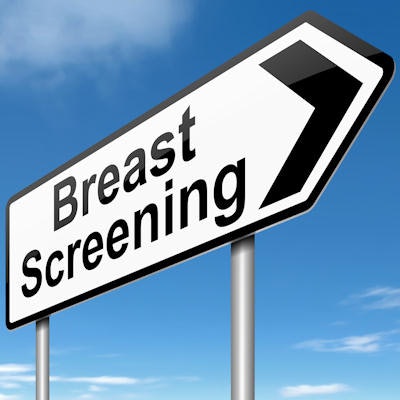
It seems like almost every medical specialty has its own guidelines for when women should be screened for breast cancer. But are primary care doctors actually paying attention when they refer patients for screening? Yes, according to a study published online August 9 in the American Journal of Roentgenology.
Physicians who refer patients to mammography screening are affected by their own specialty's guidelines on breast exams -- a phenomenon that patients need to understand to make truly informed decisions about breast cancer screening, wrote the group led by Dr. John Scheel, PhD, from the University of Washington.
"Our findings suggest that physician referral patterns were highly associated with specialty society-specific guidelines," the authors wrote.
Consensus broken down
Since the U.S. Preventive Services Task Force (USPSTF) updated its breast cancer screening recommendations in 2009 -- and reconfirmed them earlier this year -- consensus regarding when screening should start and how often women should be screened has broken down.
Before 2009, the American College of Radiology (ACR), the American Congress of Obstetricians and Gynecologists (ACOG), the American Academy of Family Physicians (AAFP), and the American College of Physicians (ACP) all recommended starting screening at age 40, with an interval of one to two years. But after 2009, the AAFP and the ACP began to advise biennial screening for women 50 to 74 years old, in line with the USPSTF's recommendation. And the American Cancer Society in October 2015 revised its guidance upward to 45.
So have primary care physicians' referral patterns for mammography changed? Definitely, Scheel's group found -- and this matters because these are the physicians women are most likely to encounter first. Screening mammography referral rates decreased by 25% from 2007-2008 to 2011-2012 across all preventative medicine visits for women ages 40 and older, with the most significant referral rate decreases among family and internal medicine physicians (AJR, August 9, 2016).
Transparency is key
Even with differences around when breast cancer screening should start and how frequently it should be conducted, most current recommendations emphasize a personalized approach that relies on "shared decision-making" -- that is, discussion between physicians and their patients about what makes the most sense for the individual woman. But patients may not know that their physicians' mammography referral practices are influenced by their specialty, said corresponding author Dr. Christoph Lee, also from the University of Washington.
 Dr. Christoph Lee from the University of Washington.
Dr. Christoph Lee from the University of Washington."Patients need to understand that different specialties have different recommendations, and primary care physicians have to be aware of their own bias and make it clear to their patients when they discuss mammography screening," he told AuntMinnie.com.
Rather than analyzing patient survey data to determine whether women are getting mammograms, Scheel and colleagues investigated the actual referring patterns of physicians using data from the National Ambulatory Medical Care Survey, a nationally representative survey of office-based, outpatient clinic encounters in the U.S. The researchers included 6,496 preventive medicine office visits for women 40 and older between 2007 and 2012.
Between 2007-2008 and 2011-2012, the overall rate of mammography referrals per 1,000 visits decreased 25%, from 285 to 215 referrals. The largest decrease was among family physicians (from 230 referrals to 128, a 49% change), followed by internal medicine physicians (from 135 referrals to 79, a 46% change). The researchers found no statistically significant change in mammography referral rates among obstetricians or gynecologists.
The referral patterns parallel the guidelines adopted by physician societies, with the AAFP and ACP moving to a screening threshold of 50, while ACOG adheres to 40 as the starting age.
"Although there were significant decreases in referral rates among family physicians and internal medicine physicians commensurate with their specialty societies' recommendations, there was no statistically significant decrease in referral rates observed among obstetricians and gynecologists, whose society continued to recommend more frequent screening," the authors wrote.
They were surprised to find that when they stratified the results by age, the greatest decrease in mammography referral rates was among women 75 and older, followed by women ages 50 to 74. The lowest decline in referral rates was among women 40 to 49 -- for whom most societies recommend shared decision-making between physicians and their patients, the group wrote.
Leveling the field
How can this bias be mitigated, so patients can truly make informed choices about mammography screening? Perhaps physicians should discuss with patients whether they follow their own society's guidelines, Scheel and colleagues suggested.
"An ethical argument can be made that physicians should disclose whether they follow their own society's guidelines regarding routine screening during shared decision-making conversations with their patients and how they may differ from other published recommendations," they wrote. "Primary care physicians should be able to justify their adherence to any particular set of recommendations to patients during these discussions."
In any case, myriad sources and authorities on the issue of routine mammography screening add to the general confusion and controversy regarding the balance between screening's benefits and harms, the authors wrote. So providers need to take responsibility for helping their patients navigate the different recommendations.
"All physicians need to realize that patients are most likely confused, since there are so many different mammography screening recommendations out there," Lee said. "And patients need to know that their physicians are likely influenced by their society's guidelines."




















